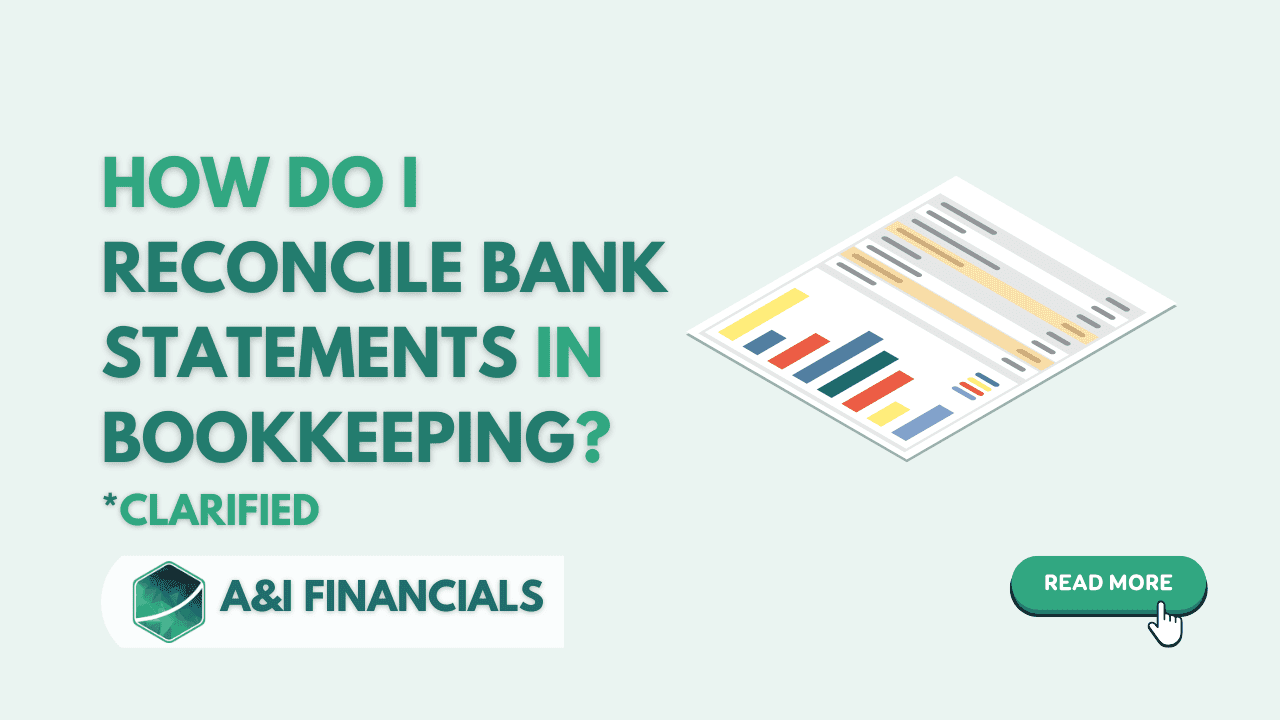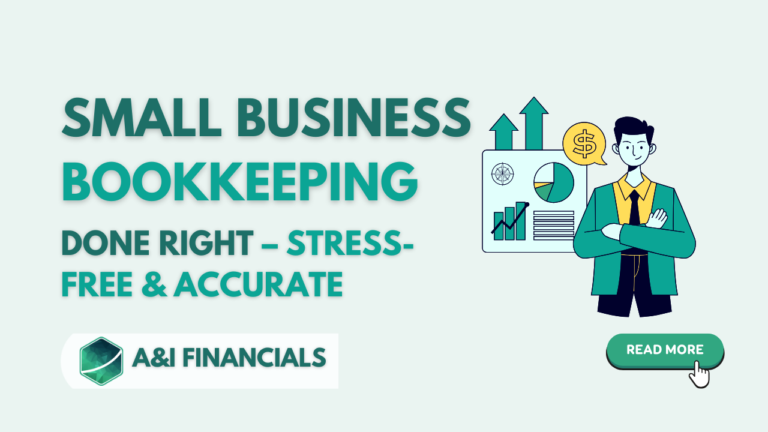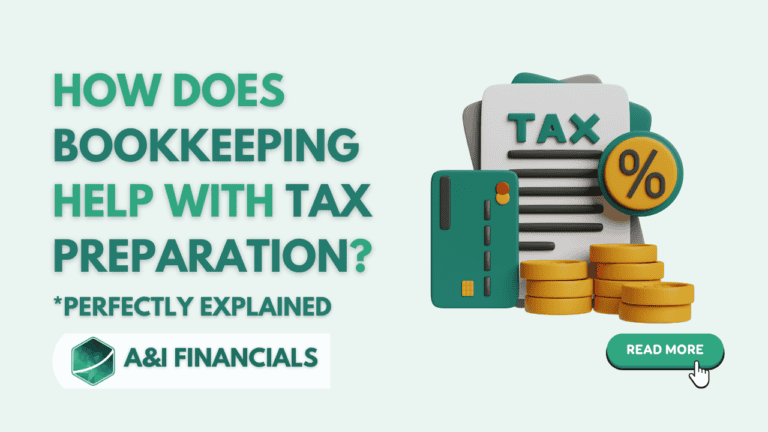How Do I Reconcile Bank Statements in Bookkeeping?
Reconciliation. It’s one of those bookkeeping tasks that sounds complicated but is crucial for keeping your business records accurate. So, how do I reconcile bank statements in bookkeeping? Simply put, it’s the process of comparing your business records to your bank’s records to ensure they match up. But let’s break it down in more detail—no jargon, just easy steps to get you through it.
What Is Bank Reconciliation Statement & Why It Matters
A bank reconciliation statement is a document that compares the cash balance on a company’s books to the balance on the bank statement. The goal is to ensure that the two balances match after accounting for any deposits in transit, outstanding checks, and other discrepancies like bank fees or errors.
It matters because it helps keep your financial records accurate and up-to-date, ensuring that your company’s accounting records reflect the correct cash position. Regular bank reconciliations can help prevent fraud, catch bank errors, and improve cash flow management, giving you a clearer picture of your financial health.
Step-by-Step Guide: How to Reconcile Your Bank Statements
Now, let’s get into the nitty-gritty of how to reconcile bank statements in bookkeeping. This process involves a few key steps, but once you get the hang of it, you’ll breeze through it like a pro.
- Gather Your Documents
First things first, grab your bank statement and your business records. The bank statement will show all the bank transactions that have gone through your account during the statement period. You’ll also need your accounting records—whether you use spreadsheets or accounting software, make sure they’re accurate and up-to-date. If you run a small business, chances are you’re already using accounting software, which will make this process a lot smoother.
- Compare Deposits and Withdrawals
Start by comparing deposits. Look at the deposits listed on the bank statement and make sure they match the deposits you’ve recorded in your business records. Do the same for withdrawals. Each transaction on your bank statement should have a corresponding entry in your business account.
If any deposits or withdrawals don’t match, it’s time to investigate. Were there any deposits in transit? A deposit in transit is money you’ve recorded in your business records but hasn’t yet cleared the bank. It’s normal, but you’ll want to make a note of it.
- Check for Bank Errors
Sometimes the bank makes mistakes. Maybe they recorded a transaction twice or added an extra fee. These bank errors need to be corrected to ensure your bank statement balance matches your company’s accounting records. Contact your bank to fix any errors.
- Adjust the Balance
Once you’ve checked the transactions, you might find differences between your records and the bank statement balance. These differences can come from things like outstanding checks (checks you’ve written but haven’t been cashed yet) or automatic payments that haven’t cleared. In this case, you’ll need to adjust the balance of your records to reflect these outstanding transactions.
For example, let’s say your bank statement shows a bank account balance of $10,000, but you have an outstanding check for $500. Your business records should reflect a balance of $9,500 until that check clears.
- Review Your Accounting Software
Most businesses use accounting software to streamline the bank reconciliation process. If you’re using software like QuickBooks, the software can automatically download your bank transactions, making it easier to reconcile your bank statements. However, you still need to double-check everything. No software is foolproof, and you want to make sure your records are accurate and up-to-date.
- Make Final Adjustments
After comparing your bank statement balance to your accounting records, make any necessary adjustments. If there are errors, make sure you fix them in both your records and with your bank. Once all the transactions are accounted for and the balances match, you’re good to go.
- Prepare the Bank Reconciliation Statement
Once everything checks out, prepare a bank reconciliation statement. This document summarizes your reconciliation process, showing any adjustments you made to reconcile the business records to your bank’s records. It’s a good idea to keep this on file for future reference, especially during tax season or if you need to show proof of your financial accuracy.
Example of Bank Reconciliation
Let’s walk through an example to make this clearer. Imagine your business records show a bank account balance of $5,000 at the end of the month. However, your bank statement shows a balance of $4,800. The difference is $200, and you need to figure out why. Upon investigation, you realize you wrote a check for $300 that hasn’t been cashed yet (an outstanding check) and there was a $100 deposit made at the end of the month that the bank hasn’t processed yet (a deposit in transit). To reconcile, you’ll adjust your records to account for the outstanding check and deposit. Once done, the balances match, and your reconciliation is complete. This is a simple example, but it shows how the bank reconciliation process works to keep your business records in line with your bank transactions.
Bank Reconciliation Statement
| Bank Balance | Book Balance |
| $519,950 | $500,000 |
| Add: Deposits in transit | Add: Interest revenue, other income recorded on bank balance |
| Less: Outstanding checks | Less: Service charges, fees recorded on bank balance |
| $20,000 | $50 |
| Adjusted bank balance | Adjusted book balance |
| $499,950 | $499,950 |
Common Issues During Bank Reconciliation
Bank reconciliation isn’t always a smooth ride. There are some common issues you might run into, and knowing how to handle them will make your life easier.
Unrecorded Transactions
One of the most common issues is unrecorded transactions. Maybe you forgot to log a small business expense, or perhaps a customer payment didn’t get entered into your accounting records. The best way to avoid this? Keep your business records as accurate and up-to-date as possible. Record transactions as they happen, and always double-check your entries.
Outstanding Checks
Another common issue is outstanding checks. These are checks you’ve written but haven’t cleared yet. Make sure you account for these in your bank reconciliation statement to avoid discrepancies.
Bank Fees and Interest
Don’t forget about bank fees and interest. Sometimes, the bank will deduct fees directly from your account, or you may earn a little interest. These transactions might not be recorded in your business records, so you’ll need to add them during the reconciliation process.
Deposits in Transit
Deposits in transit can also cause issues. These are deposits that haven’t been processed by the bank yet but are recorded in your books. Make sure to note these when reconciling, so your balances match up later.
Bank Errors
Occasionally, the bank may make an error—yes, it happens! If you notice a mistake on the bank’s end, like a duplicate transaction or an incorrect charge, contact your bank immediately to resolve the issue. Keep a record of the communication so you can track the correction process.
Benefits of Regular Bank Reconciliations
You might be wondering: Why should I go through all this effort? Can’t I just rely on my accounting software? Sure, software helps, but regular bank reconciliations offer benefits beyond just catching errors.
- Catch Fraud Early: Regular reconciliation helps you spot unauthorized transactions before they become a bigger issue.
- Avoid Bank Fees: It also ensures you catch any bank errors or fees you might have overlooked.
- Improve Cash Flow Management: By keeping your business account accurate, you have a clearer picture of your cash flow. This is crucial for making sound business decisions.
- Tax Preparation: Accurate records make tax time easier. A well-maintained bank reconciliation statement gives you peace of mind that your financial reports are accurate.
- Prevent Overdrafts: Knowing exactly what’s in your account can prevent overdrafts and keep your bank transactions smooth.
Tips for Easier Bank Reconciliation
The process might seem a bit overwhelming at first, but here are some tips to make it easier:
- Stay Organized: Keep your business records in order. If you use software, make sure it’s set up properly, and update it regularly.
- Do It Regularly: Don’t wait until the end of the year to reconcile your accounts. Monthly bank reconciliations are a good practice.
- Automate Where Possible: Use accounting software that integrates with your bank account to download transactions automatically. This cuts down on manual data entry.
- Review Bank Statements Carefully: Check for bank statement showing transactions that seem unfamiliar or incorrect.
Conclusion: Stay On Top of Your Finances
Bank reconciliation might not be the most exciting part of running a business, but it’s one of the most important. So, how do I reconcile bank statements in bookkeeping? In short: You compare your records with your bank’s records, adjust the balance for any outstanding transactions, and ensure that your bank reconciliation statement is accurate and up-to-date.
By staying on top of your business account and regularly checking that your balances match, you’ll prevent financial headaches down the road. Whether you’re a small business owner or managing a more complex business account, reconciling your bank statements will help keep your finances in check.
Remember, the more often you do it, the easier it gets. And with the right approach, it becomes just another routine task in maintaining your business’s financial health. So, get started today, and ensure your bank reconciliation process runs smoothly, keeping your records accurate and your mind at ease.
FAQs
You should reconcile bank statements monthly to catch errors, prevent fraud, and maintain accurate records.
Failure to reconcile could lead to overlooked errors, missed fraudulent activities, and inaccurate financial reports, impacting decision-making.
Yes, many accounting software solutions like QuickBooks offer automated bank reconciliation features to streamline the process.
Book balance refers to your internal accounting records, while bank balance reflects what’s in your bank account at a specific time.
Outstanding checks are subtracted from the bank balance since the money has been deducted but not yet cleared by the bank.
If you find a bank error, contact your bank immediately to have it corrected, and adjust your records accordingly.
Yes, each business account should be reconciled separately to ensure accuracy and avoid mixing up transactions.
A deposit in transit refers to money that has been recorded in your books but hasn’t cleared and posted to your bank account yet.
Yes, regularly reconciling your bank statements can help detect unauthorized transactions early, reducing the risk of fraud.
It’s recommended to keep bank reconciliation statements for at least seven years for audit and tax purposes.






